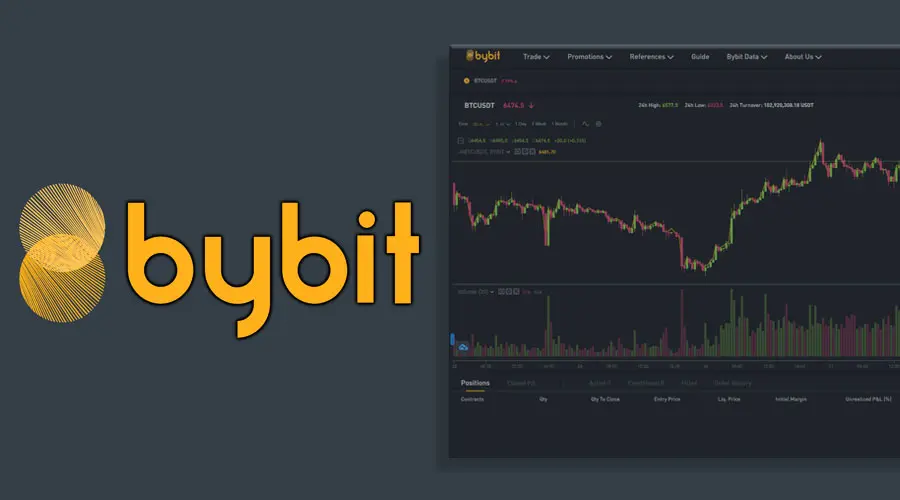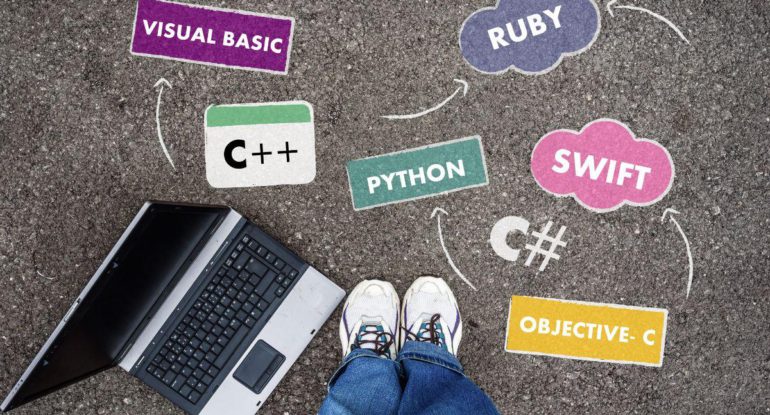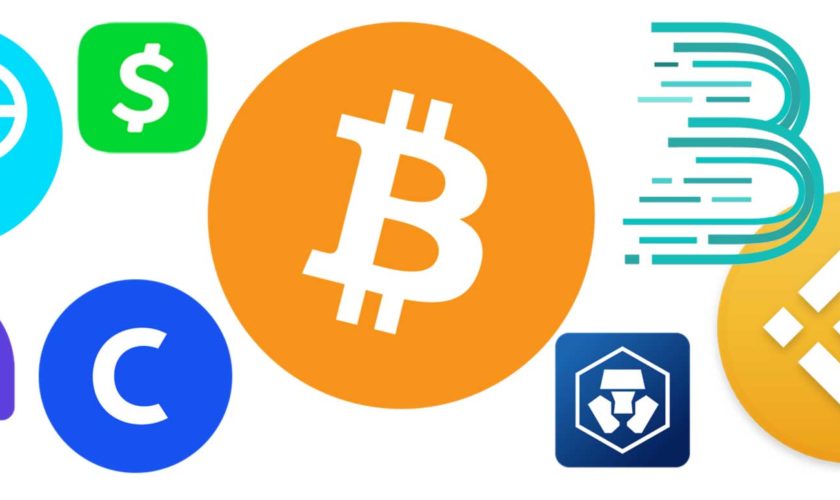Originally Published: January 9, 2024 Blockchain Magazine
In the rapidly evolving landscape of technology, blockchain has emerged as a groundbreaking innovation with the potential to reshape industries and redefine the way we interact with digital information. As blockchain continues to gain prominence, the role of blockchain engineers becomes increasingly crucial.
Read more: Top 10 Important Programming Languages To Learn For Blockchain EngineersCentral to the toolkit of any blockchain engineer are programming languages, serving as the foundation for developing the decentralized applications and smart contracts that power the blockchain. In this comprehensive exploration, we delve into the profound reasons why learning programming languages is essential for aspiring and seasoned blockchain engineers alike.
1. Solidity: The Language of Smart Contracts:
- Overview: Solidity stands as the go-to programming language for developing smart contracts on the Ethereum blockchain. It is a statically-typed language designed for creating decentralized applications (DApps) and self-executing contracts.
- Use Cases: Solidity is particularly prominent for creating decentralized finance (DeFi) applications, non-fungible tokens (NFTs), and various other blockchain-based projects within the Ethereum ecosystem.
- Key Features: It supports inheritance, libraries, and complex user-defined types. Its syntax is similar to JavaScript, making it accessible to developers with web development experience.
2. Chaincode (GoLang): Powering Hyperledger Fabric:
- Overview: Hyperledger Fabric, a permissioned blockchain framework, relies on Chaincode for smart contract functionality. Chaincode is written in GoLang, a statically-typed language known for its simplicity and efficiency.
- Use Cases: Chaincode is widely used in enterprise blockchain applications, providing a framework for creating private and permissioned blockchains for various industries, including supply chain, finance, and healthcare.
- Key Features: GoLang’s concise syntax and efficient performance make it suitable for developing complex smart contracts in enterprise-grade blockchain solutions.
3. Rust: Security and Performance in the Polkadot Ecosystem:
- Overview: Rust has gained traction in the blockchain space, especially in projects like Polkadot. Known for its focus on safety and performance, Rust is chosen for building robust and secure blockchain infrastructures.
- Use Cases: Rust is prominently used in the Polkadot ecosystem, contributing to the development of parachains and ensuring the security of the relay chain.
- Key Features: Rust’s ownership system and memory safety features make it a preferred choice for building decentralized applications where security and performance are paramount.
4. C++: Building the Core of Blockchain Protocols:
- Overview: C++ has long been a stalwart in blockchain development, frequently chosen for implementing the core protocols of various blockchain networks. Its efficiency and versatility make it suitable for both public and private blockchains.
- Use Cases: C++ is utilized in the development of core blockchain protocols, such as Bitcoin and Litecoin, as well as in creating custom blockchain solutions for diverse applications.
- Key Features: C++’s high performance and low-level capabilities make it suitable for developing the foundational components of blockchain networks, including consensus algorithms and networking protocols.
5. JavaScript (Node.js): The Web Developer’s Entry into Blockchain:
- Overview: JavaScript, especially when used with Node.js, has become a popular choice for blockchain development, particularly in creating decentralized applications that run on the server-side.
- Use Cases: JavaScript is widely employed in the development of front-end interfaces for decentralized applications, as well as in the creation of blockchain solutions that require server-side scripting.
- Key Features: JavaScript’s asynchronous nature and ease of integration with web technologies make it an accessible language for developers entering the blockchain space from a web development background.
6. Python: Versatility in Blockchain Development:
- Overview: Python, known for its simplicity and readability, has found its way into blockchain development. It is employed for various purposes, from building smart contracts to creating tools and frameworks for blockchain projects.
- Use Cases: Python is used in the development of smart contracts on platforms like Ethereum, as well as in building blockchain-related tools, libraries, and frameworks.
- Key Features: Python’s readability and extensive libraries make it a versatile choice for blockchain engineers, enabling them to streamline development processes and quickly prototype solutions.
7. Java: Enterprise-Grade Blockchain Solutions:
- Overview: Java, with its platform independence and robust ecosystem, is often chosen for developing enterprise-grade blockchain solutions. It is utilized in various blockchain frameworks and platforms.
- Use Cases: Java is prevalent in enterprise blockchain solutions, contributing to the development of applications that require high scalability, security, and integration with existing enterprise systems.
- Key Features: Java’s object-oriented nature, cross-platform compatibility, and enterprise support make it suitable for building complex and scalable blockchain applications.
8. C#: Leveraging Microsoft’s Blockchain Frameworks:
- Overview: C# (C-Sharp) is a programming language developed by Microsoft and has found relevance in the blockchain space, especially in projects utilizing Microsoft’s blockchain frameworks like Stratis.
- Use Cases: C# is used in the development of blockchain applications on platforms like Stratis, contributing to the creation of private blockchains and enterprise solutions.
- Key Features: C#’s integration with Microsoft technologies and its object-oriented design make it a valuable asset for developers working on blockchain projects within the Microsoft ecosystem.
9. Vyper: Simplified Smart Contracts on Ethereum:
- Overview: Vyper is an alternative to Solidity, designed to be a more secure and readable language for writing smart contracts on the Ethereum blockchain.
- Use Cases: Vyper is employed by developers who prioritize simplicity and security in smart contract development on Ethereum, particularly in cases where readability and security are paramount.
- Key Features: Vyper’s syntax is deliberately simplified compared to Solidity, making it easier for developers to audit and understand smart contracts, reducing the risk of vulnerabilities.
10. LLL (Low-Level Lisp-like Language): Advanced Smart Contract Development:
- Overview: LLL is a low-level language that allows developers to write smart contracts at a more granular level, providing advanced control over the Ethereum Virtual Machine (EVM).
- Use Cases: LLL is used by developers seeking fine-grained control over the execution of smart contracts on the Ethereum blockchain, particularly in scenarios where optimization is critical.
- Key Features: LLL provides low-level access to the Ethereum Virtual Machine, offering advanced developers the ability to optimize and fine-tune smart contracts for specific use cases.
Are Blockchain Engineers in Demand?
Blockchain technology has emerged as a transformative force with applications across various industries, creating a surge in demand for skilled professionals to navigate and innovate within this evolving landscape. The question of whether blockchain engineers are in demand can be explored through various dimensions:
- Industry Adoption:
- Blockchain adoption has expanded beyond cryptocurrency, reaching sectors such as finance, healthcare, supply chain, and more. As industries recognize the potential of decentralized and secure systems, the demand for blockchain engineers has grown.
- Blockchain Use Cases:
- The diversity of blockchain use cases, including smart contracts, decentralized finance (DeFi), non-fungible tokens (NFTs), and supply chain tracking, contributes to the demand for engineers with specialized knowledge in these areas.
- Skills Gap:
- The rapid evolution of blockchain technology has resulted in a skills gap, as the demand for blockchain engineers outpaces the availability of qualified professionals. Companies seek individuals with expertise in blockchain development, cryptography, and distributed ledger technologies.
- Enterprise Blockchain Projects:
- Large enterprises are increasingly integrating blockchain into their operations. As companies implement blockchain solutions to enhance efficiency, transparency, and security, the demand for engineers capable of developing and maintaining these systems is on the rise.
- Startups and Innovation:
- The startup ecosystem is thriving with companies focused on blockchain innovation. Startups working on novel blockchain applications, protocols, and solutions are actively seeking talented engineers to drive their projects forward.
- Decentralized Finance (DeFi):
- The explosive growth of DeFi platforms has created a significant demand for blockchain engineers well-versed in smart contract development, blockchain security, and protocol design.
- Blockchain Platforms:
- Various blockchain platforms, including Ethereum, Binance Smart Chain, and Polkadot, have gained prominence. Engineers with expertise in developing decentralized applications (DApps) on these platforms are in high demand.
- Government and Regulatory Initiatives:
- Governments and regulatory bodies are exploring blockchain applications for enhanced transparency and security. Initiatives in areas like identity management and public services contribute to the demand for blockchain engineers.
- Integration with Emerging Technologies:
- Blockchain is increasingly integrated with other emerging technologies such as artificial intelligence, internet of things (IoT), and edge computing. Professionals with cross-disciplinary skills are sought after to create holistic solutions.
- Remote Work Opportunities:
- The nature of blockchain development often allows for remote work. This flexibility broadens the talent pool as companies can tap into a global network of skilled engineers, further emphasizing the demand for remote blockchain talent.
Conclusion:
As we draw the curtains on our exploration into the realm of blockchain engineering, it becomes abundantly clear that the choice of programming languages plays a pivotal role in shaping the trajectory of success in this dynamic field. The landscape of blockchain is as diverse as the technology itself, and the languages one chooses to master can be likened to selecting the right tools for a craftsman.
In this journey, we have traversed foundational languages like Solidity, recognizing its dominance in the development of smart contracts on the Ethereum blockchain. The importance of C++ has been underscored, serving as a stalwart in the creation of blockchain infrastructures and contributing significantly to the open-source community.
Python has emerged as a versatile companion, finding its place in various aspects of blockchain development, from scripting to building decentralized applications (DApps). The elegance and simplicity of Python have made it an attractive choice for those seeking a rapid and efficient development process.
As we bid adieu to our exploration, it’s crucial to emphasize that the blockchain space is ever-evolving. New languages may emerge, and existing ones might undergo transformations to better suit the dynamic demands of the industry. Therefore, the journey of a blockchain engineer is one of continuous learning and adaptation.
To all aspiring blockchain engineers, the path ahead is both challenging and exhilarating. Equip yourself with a solid foundation in the languages we’ve uncovered, but remain agile and open to embracing new technologies. The blockchain universe rewards those who innovate and persevere.
As you set forth into the world of blockchain engineering, armed with the knowledge of programming languages as your compass, remember that your journey is uniquely yours. May your code be resilient, your algorithms be efficient, and your innovations reshape the future of decentralized technologies.













